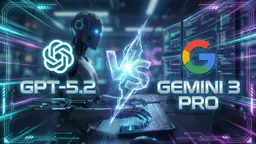Pyrafect
Pyrafect is an AI-powered risk analysis tool that identifies and prioritizes high-risk software issues to streamline bug fixing and improve user experience.
https://pyrafect.com/

Product Information
Updated:Sep 5, 2024
What is Pyrafect
Pyrafect is an innovative software solution that combines artificial intelligence and risk-based analysis to help development teams identify and address critical software issues. By automatically detecting and prioritizing high-risk bugs, Pyrafect enables developers to focus their efforts on the most impactful problems, ultimately leading to a more stable and reliable user experience. This tool is designed to streamline the bug fixing process and optimize development resources.
Key Features of Pyrafect
Pyrafect is an AI-powered software tool that combines risk-based analysis with artificial intelligence to identify and prioritize high-risk issues in software development. It streamlines the bug fixing process, allowing developers to focus on delivering a stable user experience by automatically detecting and highlighting the most critical problems that need immediate attention.
AI-Powered Risk Analysis: Utilizes artificial intelligence to assess and prioritize software issues based on their potential risk and impact.
High-Risk Issue Identification: Automatically detects and highlights the most critical problems in software code that require immediate attention.
Streamlined Bug Fixing: Optimizes the debugging process by focusing developer efforts on the most important issues first.
User Experience Focus: Helps maintain a stable user experience by prioritizing fixes that have the greatest impact on end-users.
Use Cases of Pyrafect
Software Development Teams: Development teams can use Pyrafect to quickly identify and address the most critical bugs in their codebase, improving overall software quality.
Quality Assurance: QA teams can leverage Pyrafect to prioritize testing efforts on high-risk areas of the software, ensuring more efficient use of resources.
Project Management: Project managers can use Pyrafect's insights to make informed decisions about resource allocation and release readiness.
Continuous Integration/Continuous Deployment: Pyrafect can be integrated into CI/CD pipelines to automatically flag high-risk changes before they reach production.
Pros
Improves efficiency in bug fixing by prioritizing critical issues
Enhances software stability and user experience
Reduces human error in risk assessment
Cons
May require initial setup and integration effort
Effectiveness may depend on the quality of AI training data
How to Use Pyrafect
Sign up for Pyrafect: Visit the Pyrafect website at https://pyrafect.com/ and sign up to be notified when the product is ready. The website indicates it is not yet available but will notify users when it launches.
Wait for launch notification: As Pyrafect is not yet available, users must wait to receive a notification when the product launches before they can begin using it.
Install Pyrafect: Once launched, install the Pyrafect software or access the web application as directed in the launch notification.
Connect your codebase: Integrate Pyrafect with your existing codebase and development tools so it can analyze your code for risks and bugs.
Review AI-generated risk analysis: Examine the AI-powered risk analysis provided by Pyrafect to identify high-priority issues in your code.
Prioritize and fix critical bugs: Use Pyrafect's recommendations to focus on fixing the most critical bugs and issues first to improve stability.
Monitor ongoing analysis: Continuously monitor Pyrafect's analysis as you develop to catch new issues early and maintain code quality.
Pyrafect FAQs
Pyrafect is a tool that combines AI and risk-based analysis to identify high-risk issues in software development, helping prioritize and streamline bug fixes to improve user experience.
Popular Articles

AI Christmas Photo Trend 2025: Viral Prompts, Free Generators & How to Create Stunning Christmas AI Photos
Dec 23, 2025

ChatGPT Image 1.5 vs Nano Banana Pro: The Battle for the Best AI Image Generator in 2025
Dec 18, 2025

ChatGPT Image 1.5 Is Here: Inside OpenAI’s New AI Image Generation Model in 2025
Dec 18, 2025

OpenAI GPT-5.2 vs Google Gemini 3 Pro: Latest Review 2025
Dec 18, 2025







